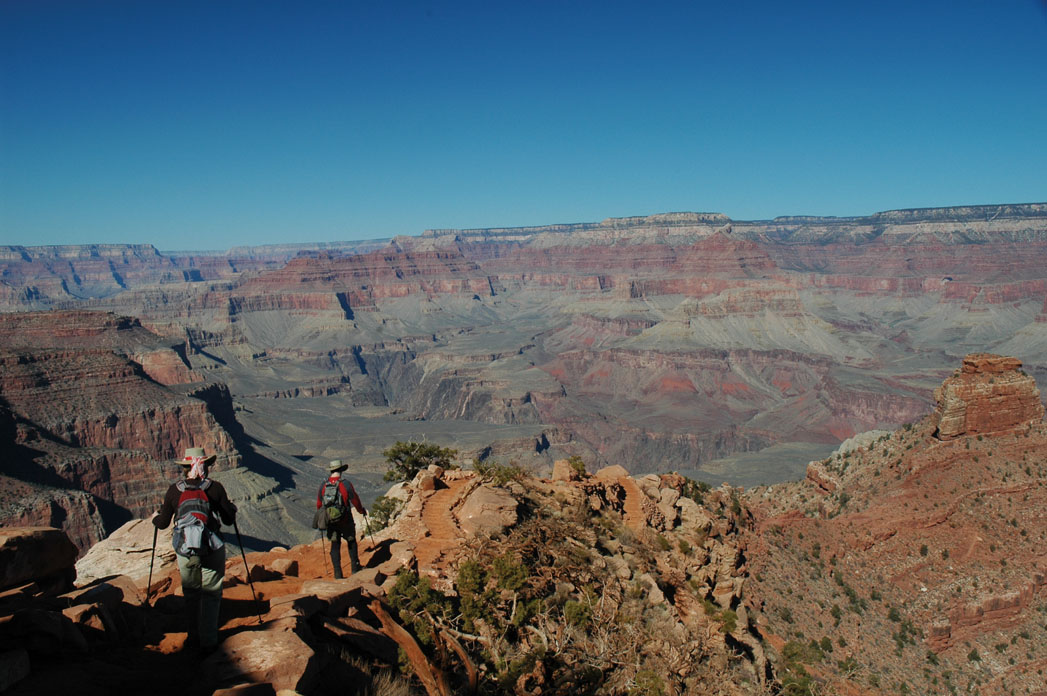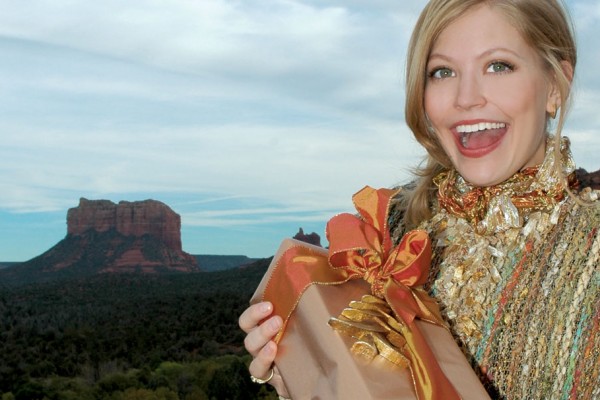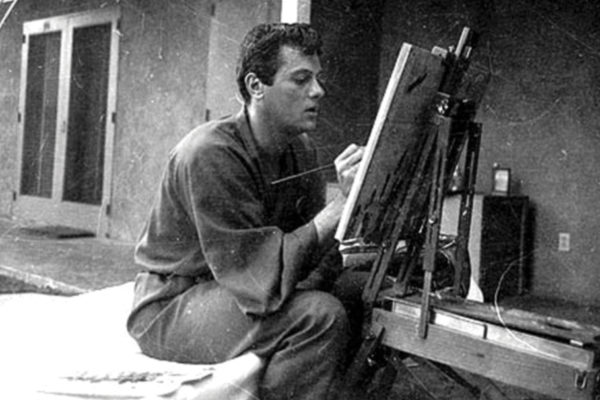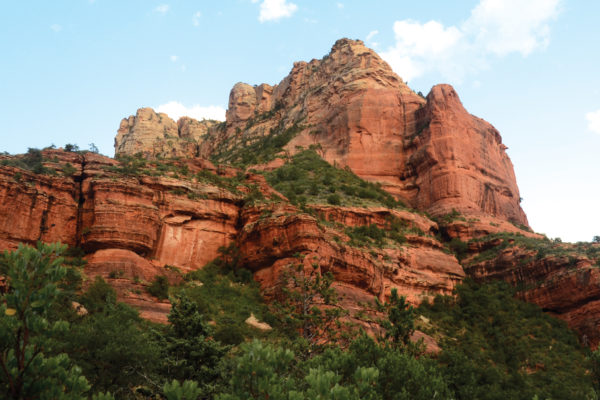On average, it rains on Thanksgiving Day in Arizona every 10 years. Naturally, that once-a-decade storm would bring downpours, lightning and snow to northern Arizona as we shopped for freeze-dried food and compressed our sleeping bags to the size of loaves of bread, all in preparation for fulfilling a life-long goal: backpacking to the bottom of the Grand Canyon. We’d spent months training, hiking trails around Sedona with fully loaded backpacks (ignoring the strange looks we received from other hikers out for an afternoon stroll) and waking up while it was still dark outside just to spend an hour on the stair climber at the gym. So, do you cancel a trip that you began planning in the spring, forfeiting the permit that you obtained back when the weather was hovering near 100 degrees and head out in a frantic search for the last turkey in Sedona, or do you suck it up and prepare yourself for miles and hours of slogging through mud and rain? Admittedly, most sane people would choose the former and reschedule the trip – that’s exactly what half of our party, driving in from California, decided to do. But we’re cut from a different, more stubborn cloth. While the storm raged outside the night before Thanksgiving, we pulled out our rain pants, covered our packs in trash bags to keep them as dry as possible and hoped for the best.
Backpacking into the Grand Canyon is hard – logistically and physically – no matter what time of the year. It’s not something you undertake on a whim, at least if you hope to come out in one piece. As experienced hikers, we realized this. But I’d been obsessed with the Grand Canyon since I first saw it in 1999. It was actually a factor in our decision to move to Sedona – I wanted to be close enough to the canyon to take a day trip whenever the mood struck. In 2006, I’d hiked to Havasu Canyon, one of the Grand Canyon’s many side canyons, for Sedona Monthly, but it was the bottom of the canyon’s inner gorge that called to me. Sure, we could have taken a mule to the bottom, saving our strength and sacrificing our backsides, but, for me, I needed to get to the bottom on my own power. I longed for the physical and mental challenge: the sweat, the blisters, the lack of showers and cell phones, the chance to put a closet full of outdoor gear to the test. I was also eager for the overwhelming feeling of accomplishment that was sure to follow.
Why Thanksgiving? My husband and I had a few days off work and had no desire to attempt this hike during warm weather. We were also familiar with the stories about trails and campgrounds choked with people and (smelly) mules; theoretically, Thanksgiving would be a quieter time of year. So we’d miss the green bean casserole – at least it’d be the first Thanksgiving where we lost weight rather than gained it.
The alarm went off at 6 a.m. Thursday morning and we lay in bed, listening to rain pounding the roof while flashes of lightning lit up the dark room and claps of thunder echoed perilously close. “I’m not going,” I declared. The idea of hiking across a ridge with metal trekking poles in the middle of a thunderstorm sounded like suicide, not adventure. Moments after my declaration, the rain slowed and the thunder faded – within an hour it was silent again. We shrugged, decided the weather gods were giving us a break after all and stuck some extra batteries into our packs, knowing that with a later start we’d likely be completing the hike in the dark. No big deal.
As soon as we were north of Flagstaff the snow began.
By the time we reached Grand Canyon National Park, there was a good inch of snow on the ground and the visibility into the canyon was zero. Nonetheless we suited up – five layers of clothing on top, three on the bottom and metal spikes attached to the soles of our hiking boots. The silence in the park was eerie. Instead of the usual banter in dozens of different languages we found small groups, most huddled together on the shuttle buses, their disappointment obvious. We parked at the Backcountry Office and climbed onto a series of shuttle buses to reach the South Kaibab Trailhead located at Yaki Point near the eastern edge of the national park (if we’d been at the park by 9 a.m., we would have hopped on the Hiker’s Express Shuttle and headed straight for Yaki Point). We finally reached the trailhead at 2:30 p.m. No one else was around, and as the sound of the bus faded down the road a sense of aloneness completely enveloped me. The trail traffic we’d heard about might as well have been a myth. The mules that vie for space on the trail were corralled a few hundred yards away, and the animals seemed to be laughing at the two lone backpackers attempting to hike one of the most unforgiving spots on earth in a heavy mist with little more than three hours of daylight left. Again, most people would turn around and wait for the next bus to return them to the warmth of their car but, with determined gazes and gritted teeth, we began the steepest descent of our lives.




